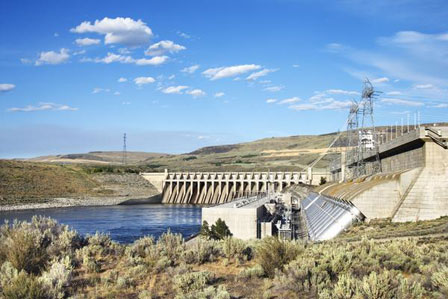If you need income with a low level of risk, there aren’t many options these days.
Interest rates are absurdly low as central banks create huge quantities of digital money to shield governments, mega-banks and powerful elites from the consequences of their shoddy policies, exploitation and general irresponsibility. (It’s the largely-innocent masses who bear the costs).
So… where can you put your money if you need to earn higher income from your savings?
One area of opportunity would seem to be dividend-paying companies and funds investing in infrastructure – toll roads, airports, power plants, that sort of thing.
Their attractions are dividend yields based on income flows that often offer stability, at least enough growth to match inflation, official protection, and the benefits of near-monopoly situations.
Those features make infrastructure seemingly attractive for retirees needing income, and especially for pension funds that need to match stable earnings flows over the long term with their increasing liabilities.
To some, initial dividend yields as high as 9½ per cent – currently on offer from the DUET Group, listed in Sydney – look irresistible. But of course as an investor you have to look beyond initial payouts for worms in the woodwork.
Infrastructure developed into an asset class of its own through the hard-driving leadership of Australia’s Macquarie bank. It saw the opportunity to make huge profits from bundling seemingly-boring publicly-owned capital assets into listed and unlisted vehicles, providing specialist long-term management of the assets, and then selling them off to mainly-institutional investors looking for stable, low-risk, income flows.
It turned Macquarie into a global giant that other investment banks sought to emulate.
Their funds plunged into crisis when the credit bubble burst. Too much debt taken on to juice up income returns. Too much dependence on revenue streams – toll roads, for example – that unexpectedly shrank as the world plunged into recession.
One example of the impact is what happened to distributions by the Singapore-listed Macquarie International Infrastructure Fund. After climbing from 2.20
If you need income with a low level of risk, there aren’t many options these days.
Singaporean cents per share in the first half of 2005 to 4.25 in the same period of 2008, it collapsed to 1.50 in the following years. Payments have started to recover, but are still half the level they reached at their peak.
However, interest in infrastructure investment is now rebuilding.
One reason is realization by investors concerned about income that central banks are going to prolong their suffering from profligate money creation for years. And when that comes to an end, it would be wise to be in assets offering protection against inflation.
Another reason is that banks have cut back sharply on their traditional involvement in raising capital for infrastructure projects and providing bridging capital as they focus on strengthening their balance sheets, particularly through diverting capital into government bonds.
“We are at the initial stages of a war for capital,” says UBS’s senior global economist Paul Donovan.
It’s becoming clear that in future the politicians are going to force pension and other long-term funds to invest in infrastructure, as such projects are politically-defensible ways to boost economic activity and job creation, while tapping private-sector savings pools to pay for them is an attractive alternative to boosting further excessively-high levels of government debt.
“Infrastructure has become one of the biggest constraints to growth” in many emerging economies, says the FT’s Henny Sender. “Many governments do not have the money to pay for the roads, ports, power plants, irrigation and waste management systems their countries desperately need.”
Against that background of a rising tide of political determination to “do something,” fund managers recognize that it makes sense to be early movers, buying up attractive assets ahead of what’s likely to be a rising market, and building up the specialist skills needed to manage such assets. Interest in so-called “trophy” assets – ones that are fully functioning and yielding a predictable, index-linked income stream – is already boosting prices and depressing yields.
see next article – Scarcity of resources for maintenance, replacement, expansion
CopyRight – OnTarget 2012 by Martin Spring







